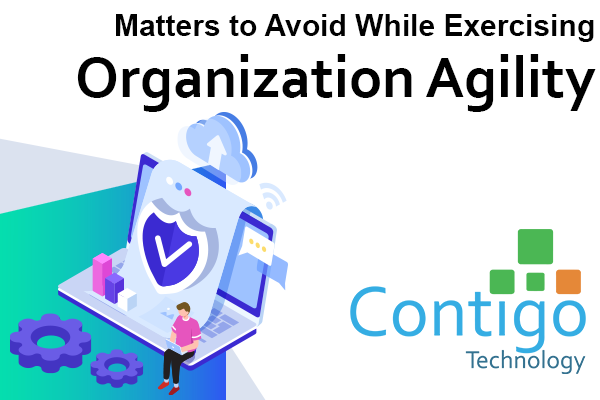
Matters to Avoid While Exercising Organizational Agility
Whilst it’s common knowledge that small to medium-sized businesses usually have much fewer resources when compared to larger companies, prioritizing organizational agility is just as crucial for their survival. In this modern age, many different unexpected and unpleasant situations can come about at any given time, meaning that companies need to be aware of how to avoid being overwhelmed. When thinking about unforeseen events, supply chain issues, pandemics, war, and inflation may come to mind. Thus, these are indicators demonstrating why your business needs to be as agile as possible.
When customer, employee, economy, and market requirements change, agile companies can adapt rapidly to continue striving toward their business targets. In order to be agile, you should have systems which enable you to respond efficiently to changing situations and opportunities by getting your people, processes, and technologies as prepared as possible.
Despite this, perfecting agility isn’t an overnight process. You may encounter challenges within your journey.
Watch out for setbacks along the way
When working towards organizational agility, look out for these five bumps which may occur along the way*:
-
Survival mentality
Within agility, survival mentality concerns a company unit’s reluctance to adopt innovations because of risk-averse mindsets or the perceptions that innovations may consume existing business.
-
Politics in the workplace
If a company unit’s priorities and objectives don’t align, this may be because of workplace politics. This can often lead to innovation units competing within the same organization and a dispersal of innovation efforts, diluting the practical impact.
It could additionally bring about a refusal to reconstruct the innovation portfolio in order to concentrate on several mission-critical priorities, preferring to maintain ‘pet projects’ for long periods instead.
-
Information silos
Information silos stop company units from sharing information. When information and any other valuable assets are kept from others, the entire organization comes to harm. Information silos explain why innovations often fail to scale in the central business despite being successful within the business unit.
-
An incompatible strategic fit
You may find that your innovation unit has become disconnected from the central company and lost sight of the overall business object over a long period. When this occurs, the innovation team might begin to define its mission in ways which are inconsistent with the principal business.
-
A lack of buy-in
If the main company’s leadership team does not buy-in or participate, you will most likely face failure. This may be because the company has never been adequately engaged or because its attention has been stretched over many initiatives.
Partner for success
Continuously looking out for the roadblocks mentioned above could potentially be more than most small to medium-sized businesses can handle. With this work requiring a colossal amount of time, effort, and skillsets, you may want to collaborate with an expert MSP like us. We can inject ease into your path towards organizational agility whilst you can concentrate on your company!
Don’t hesitate to get in touch for a no-obligation consultation.
Click here to download a complete checklist named “3 Ways to Make Your Organization More Agile” if you want to learn more!
